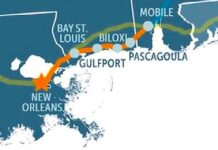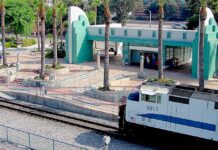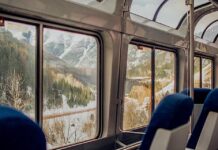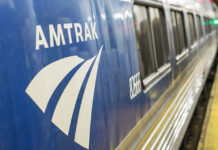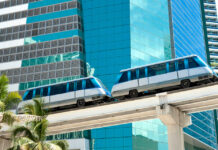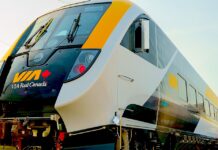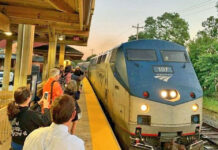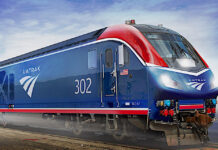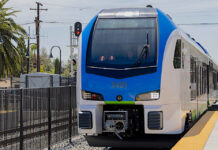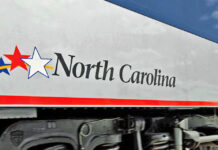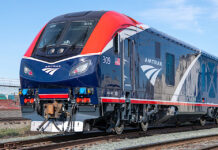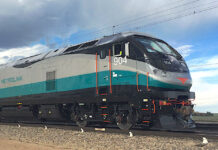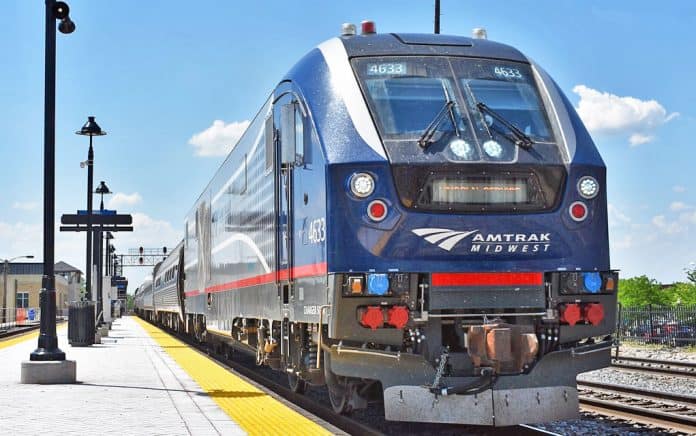
Midwesterners have been getting around by train since America’s first westward expansion over a century-and-half ago. Today, nowhere is that more evident than at Chicago’s Union Station, where a dozen Amtrak Midwest and long-distance services roll off in all directions. Some crossover into neighboring regions and states; while legacy long-distance routes sweep the Plains; edge the Great Lakes; and cross America.
In and out of Chicago’s Union Station
The USA’s busiest station outside the Northeast Corridor, Chicago Union Station is Amtrak’s Midwest and transcontinental hub. The station is also Chicagoland’s busiest commuter rail terminal. Six Metra commuter lines reach out to nearly 100 suburban locations, among them Brookfield and Riverside on the BNSF Line, and Joliet on the Heritage Line. Nearby Ogilvie Transportation Center is terminus for three additional Metra services including the UP North Line to Evanston and Kenosha WI, and the UP West Line to Oak Park and Geneva. Separate commuter lines departing from the Southside include the independent Indiana-bound South Shore Line to Dunes National Lakeshore and South Bend.
Chicagoland, the “L,” and the Loop
In rail-centric Chicago, all tracks lead to “The Loop.” The Chicago Transit Authority‘s busy five-line (Orange, Purple Express, Brown, Pink, and Green) rapid transit circulator defines the central business district it wraps. Fast “L” (elevated rapid transit) trains racing around The Loop connect locals and out-of-towners with principal Chi-town destinations. Important stations are Quincy (Amtrak/Metra Union Station, Willis Tower); Washington/Wells (Metra Ogilvie Transportation Center); as well as two that link with an integral pair of 24-hour north-south rapid transit lines: Clark/Lake (Blue Line subway to O’Hare Airport ORD); and State/Lake (Red Line “State Street” subway, Wrigley Field).
Amtrak Midwest and Long-Distance
Illinois, South and West
Union Station regional and long-distance Amtrak services make 120+ Midwest stops – and extend to over 150 destinations across the USA. Illinois Services routes fan out across the state to Quincy via Galesburg; to Carbondale via Champaign-Urbana; and to St Louis via Springfield.
The Illinois corridors are also gateways for four Amtrak long-distance services.
The California Zephyr continues from Galesburg through Iowa and Omaha on its way to Salt Lake and San Francisco. The Southwest Chief train rolls through Kansas via KC, Lawrence and Topeka before moving onto Albuquerque, Flagstaff and Los Angeles. Texas Eagle trains go beyond St. Louis to San Antonio and LA. The fabled City of New Orleans gets its start on the Chicago-Carbondale stretch before heading off to Memphis and its namesake city.
St Louis and Kansas City
The only Amtrak Midwest service not connected to Chicago, Missouri River Runner trains provide daily service between Kansas City and St Louis via the capital, Jefferson City.
Missouri’s two largest cities both benefit from local rail services. St. Louis’s two MetroLink light rail lines serve 42 stops in the Bi-State (MO-IL) region including Lambert-St. Louis International Airport and Union Station (adjacent to Amtrak/Gateway Transportation Center). Kansas City’s RideKC Streetcar connects Union Station (Amtrak) with other downtown destinations including the city’s historic River Market District.
Milwaukee, Twin Cities, Northwest
Hiawatha commuter trains connect Chicago Union Station with Milwaukee along the same Empire Builder route that continues onto the Wisconsin Dells, Minneapolis-St. Paul, Fargo, and Portland/Seattle. Both trains stop at Milwaukee’s Mitchell International Airport (MKE) and at the city’s Intermodal Station which is served by downtown’s new light rail service, The Hop.
The Twin Cities benefit from three Metro rapid transit lines (two LRT and one BRT lines) providing interconnectivity between Minneapolis–Saint Paul International Airport, the Mall of America, downtown St. Paul’s Amtrak Union Station, and downtown Minneapolis’s Target Field, where a Northstar commuter rail line continues to northwestern suburbs.
Michigan and Detroit
Michigan Services cut through Indiana to Grand Rapids via Holland, Port Huron via Lansing, and Pontiac via Detroit. In Detroit, the QLine LRT runs along Woodward Avenue connecting Amtrak at Detroit Station in New Center with Downtown’s elevated People Mover skytrain loop.
Indiana, Cincinnati, Cleveland, East
Three Amtrak services connect Indiana and Ohio with Chicago Union Station. South Bend, Toledo, and Cleveland are all served by long-distance Lake Shore Limited and Capital Limited trains which connect with Boston, New York City, Pittsburgh, and Washington DC. Cardinal Service linking Chicago with NYC and Washington DC serves Indianapolis and Cincinnati.
Cincinnati’s Union Station unloads Amtrak passengers about a mile shy of Downtown’s Bell Connector light rail circulator.
Cleveland lays claim to the Midwest’s most comprehensive rail transit network outside of Chicago. Four RTA rail lines (1 rapid transit, 3 LRT) meet up in Downtown’s Tower City. Trains serve Cleveland Hopkins International Airport , the Rock & Roll Hall of Fame, and Amtrak’s Waterfront station. A trio of BRT lines supplement the rail services.

